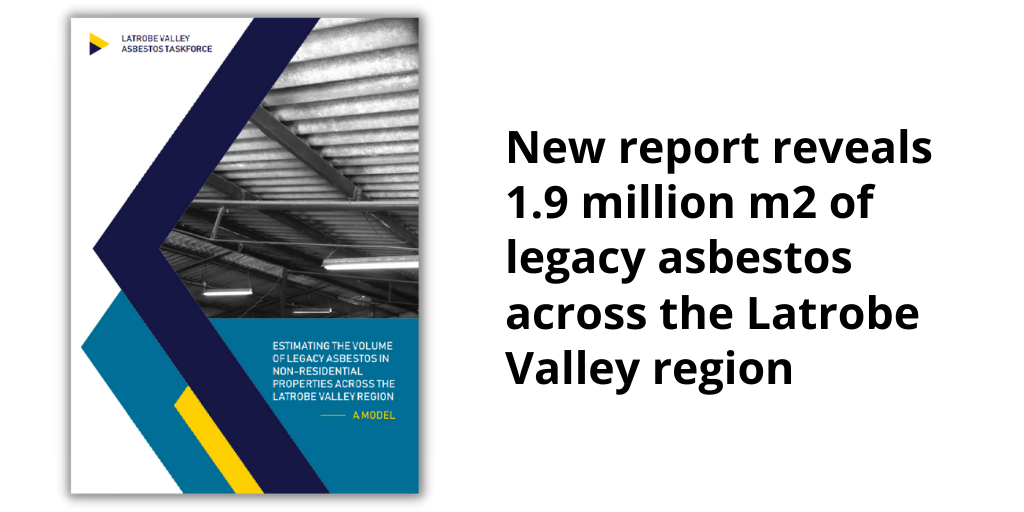The Latrobe Valley Asbestos Taskforce has produced a report that estimates the total volume of legacy asbestos found in workplaces, shops, hospitality venues, health centres and hospitals, community and government buildings, and light-medium industrial properties including farms. This study complements a 2020 report produced by the Taskforce about asbestos remaining in residential properties across the region.
“It is estimated that there is 1.9 million square metres of legacy asbestos-containing materials across the three municipalities studied,” said Latrobe Valley Asbestos Taskforce Chair and Latrobe Health Advocate Jane Anderson, “which is about the same land area size as Melbourne’s central business district.”
“Whilst the most well-known asbestos product, asbestos cement sheet, accounts for 90% of the total volume, it may surprise some to learn that the next highest is found in vinyl products such as vinyl sheets, tiles and adhesives.
“Asbestos was used in over 3,000 products and that is why all workplaces are required by law to have an asbestos register that identifies where asbestos products are located. This register must be maintained and updated at least every five years.”
The previous study undertaken by the Latrobe Valley Asbestos Taskforce into legacy asbestos in residential properties revealed a total of 3.1 million square metres across the same three municipalities, which is significantly higher than the total volume found in this new report into all other buildings.
“Asbestos really is more common than we think. It was used widely up until 1990 and it is a concern that it is still in many of our workplaces, our homes, the buildings we frequent every day,” said Ms Anderson.
“We all need to do more to understand and protect ourselves from the risks of asbestos exposure, and we need more programs and initiatives to address the challenges we will face into the future as these very large volumes of asbestos products deteriorate and release deadly fibres.
“Asbestos causes cancer, and by minimising the risks of asbestos exposure, lives will be saved. It is totally preventable.”

